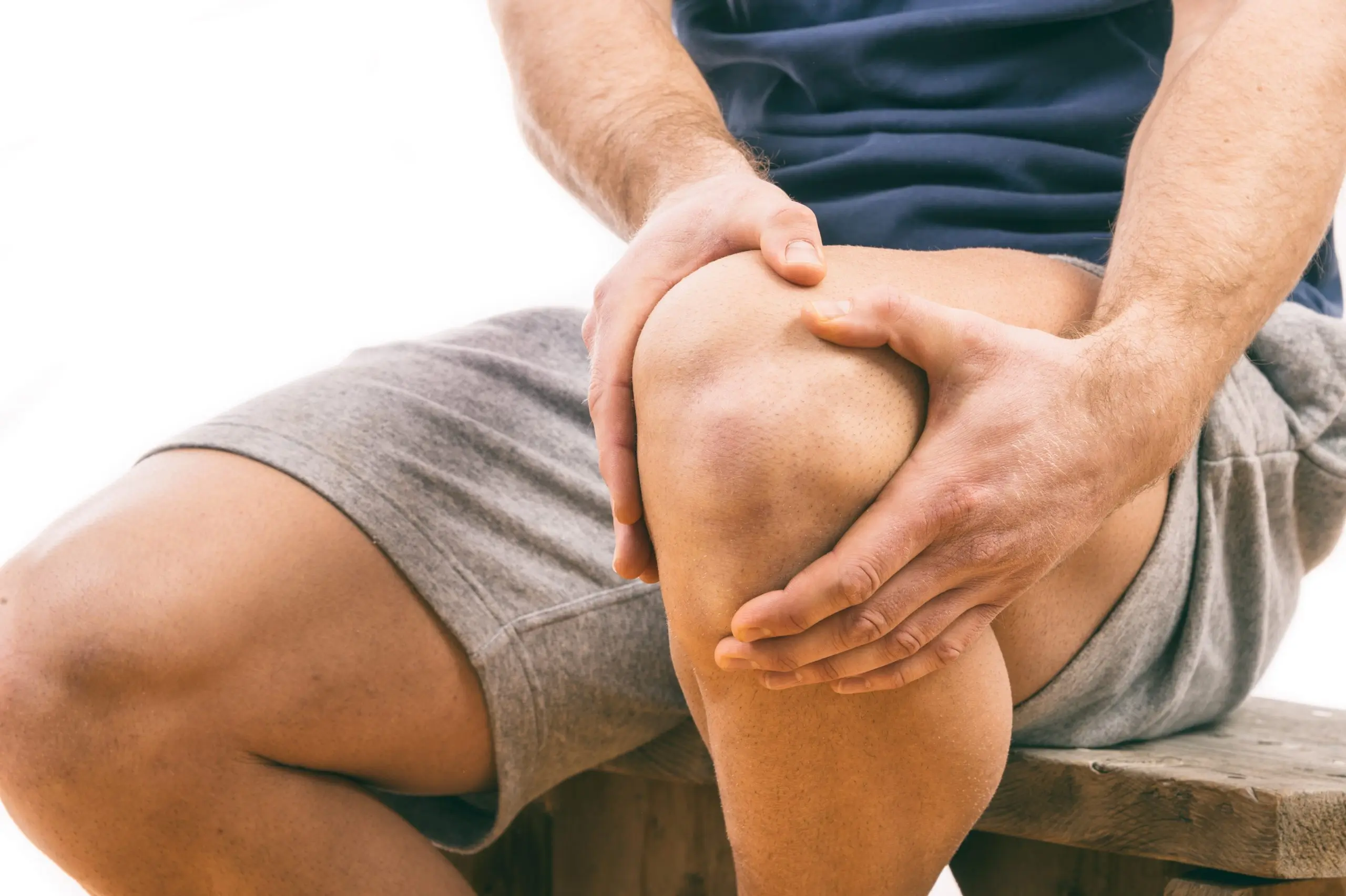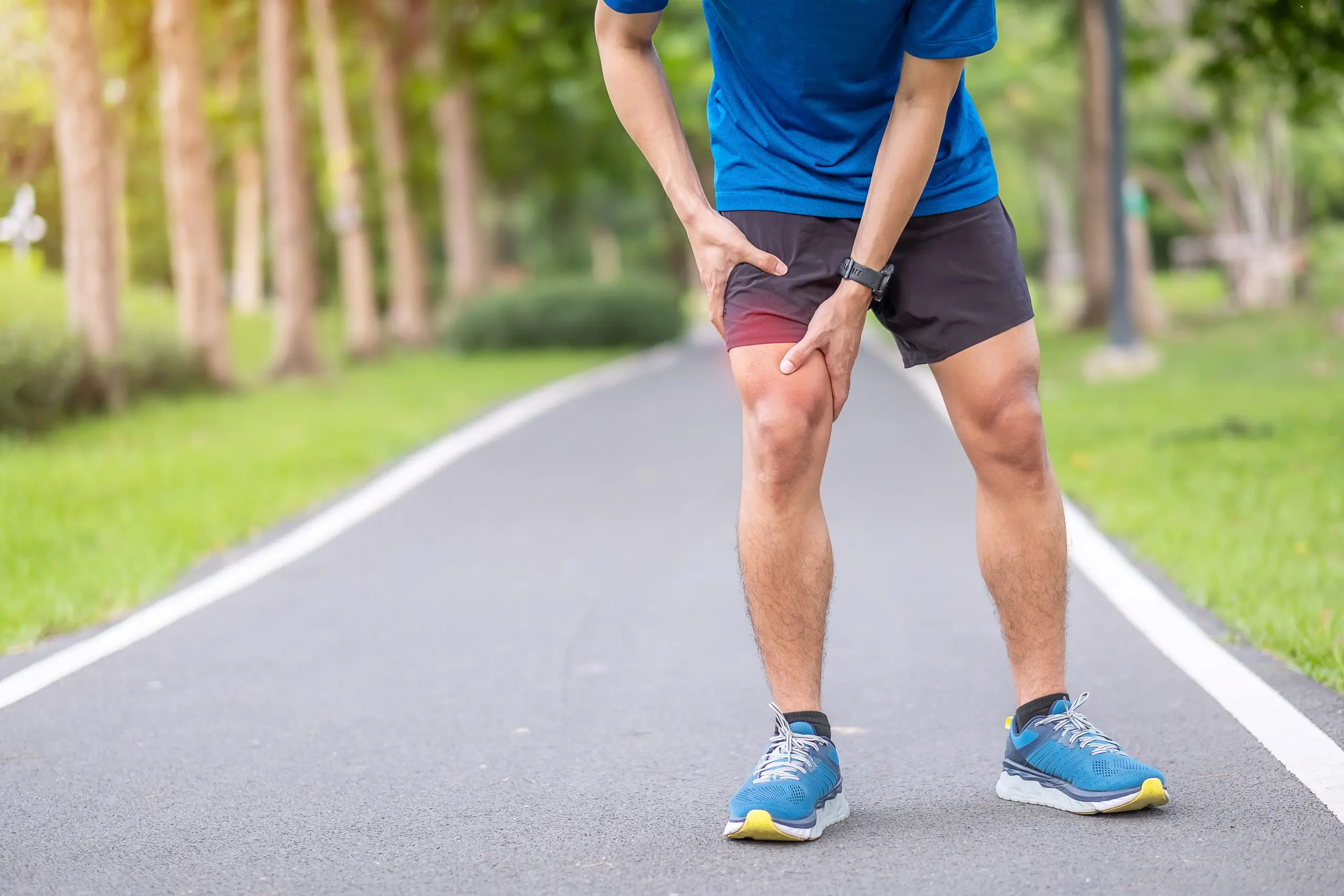ITB syndrome
Medically Reviewed by Dr Ali Zavery
Last updated on 26.06.2024
Iliotibial band syndrome, also referred to simply as ITB, is a common condition that causes knee and leg pain. In some studies it can affect up to 50% of people, particularly in populations that do a lot of exercise. This article will explain what the iliotibial band is, how its dysfunction causes the ITB syndrome and what you can do about it.
What is the iliotibial band?
The iliotibial band is a strong, thick strip of connective tissue that runs along the side of your leg from hip to the top of your shin bone. It works to stabilise your hip and knee functions, such as rotation, flexion and extension.
How do you get ITB syndrome?
It is normal for the ITB to get microtrauma from exercise and movement, however this usually heals on its own. When the iliotibial band rubs against your bones repeatedly and doesn’t have a chance to heal, ITB syndrome can occur.
The ITB becomes tight, inflamed or irritated and can persist over an extended period of time. The most common reason is overuse through exercise. It is most common in runners, hikers and cyclists.
Other triggers for ITB syndrome include wearing high heels, repeatedly using stairs or sitting for long periods with your knees bent. Sometimes it also occurs in people who are new to exercise and don’t stretch or use poor form.
What are the symptoms of ITB syndrome?
The inflammation in the ITB causes pain on the outside of your knee and sometimes also on the side of the hip. Some people describe a burning, stiffness or deep ache on the side of the leg. Occasionally people describe a popping or clicking on the side of the knee.
The symptoms are often worse when running downhill or after you have rested for a long time and then start to exercise without stretching.
You can have ITB syndrome in one or both legs. It’s important to remember that ITB syndrome can exist with other conditions such as arthritis, meniscal injuries and other joint problems.
How is ITB syndrome diagnosed?
ITB syndrome is usually diagnosed by your doctor or rehabilitation provider (such as physiotherapist, osteopath or myotherapist) through a physical examination. This is usually sufficient, but if there are any questions about the diagnosis you may also have an X-ray, ultrasound or MRI of your knee.
How is ITB syndrome treated?
- Conservative treatment: The treatment for ITB syndrome is usually conservative, which means we normally avoid invasive procedures.
- Enough rest: Commonly, you should avoid the trigger that caused the condition. This might be avoiding certain shoes, exercises or positions. Sometimes enough rest from the trigger can be enough to cure the condition, however occasionally if you resume the same trigger the symptoms can return.
- Anti-inflammatories: Anti-inflammatories can be used to settle the pain. These can be taken as tablets or as a gel to the affected area.
- Cold compresses/warm packs: Cold compresses can be used in the early stages of the condition, however when it has persisted for a long time warm packs can help to loosen up prior to exercise.
- Physical therapy: The mainstay of treatment is physical therapy. This includes stretches and strengthening. A ball or foam roller can be used on the outer part of your leg to help with this. A physical therapist can teach you techniques to warm up and cool down after exercise, to aid healing and prevent flare ups.
- Steroid injection: For severe, chronic cases, your doctor may recommend a steroid injection. This is usually administered via ultrasound and can work as an anti-inflammatory in the trigger areas.
- Surgery: Very rarely, surgery can be performed where a small part of the ITB is removed on the outer side of your knee. This can be done through a small cut on the side of your knee or with a camera. After an operation, physical therapy is still important for full recovery.
A final note
ITB syndrome is commonly treated by doctors and physical therapists. Most of the time it resolves on its own with small adjustments to your exercise regimen or lifestyle.
Getting a Mental Health Care Plan in Australia: Your Guide
Getting a Mental Health Care Plan in Australia: Your Guide Mental health matters—and if you’re feeling overwhelmed, anxious, or down, a mental health care plan can help. But what is it, and how do [...]
UTI Symptoms and Treatment: What You Need to Know
UTI Symptoms and Treatment: What You Need to Know Urinary Tract Infections (UTIs) are common, uncomfortable, and often disruptive. But what exactly are the signs to watch for, and how can you get relief [...]
Free Mental Health Care Plan Online | Bulk-Billed by Qoctor
Free Mental Health Care Plan Online | Bulk-Billed by Qoctor Discover how to get a free, bulk-billed Mental Health Care Plan (MHCP) in Australia through Qoctor's telehealth service. Accessing [...]






